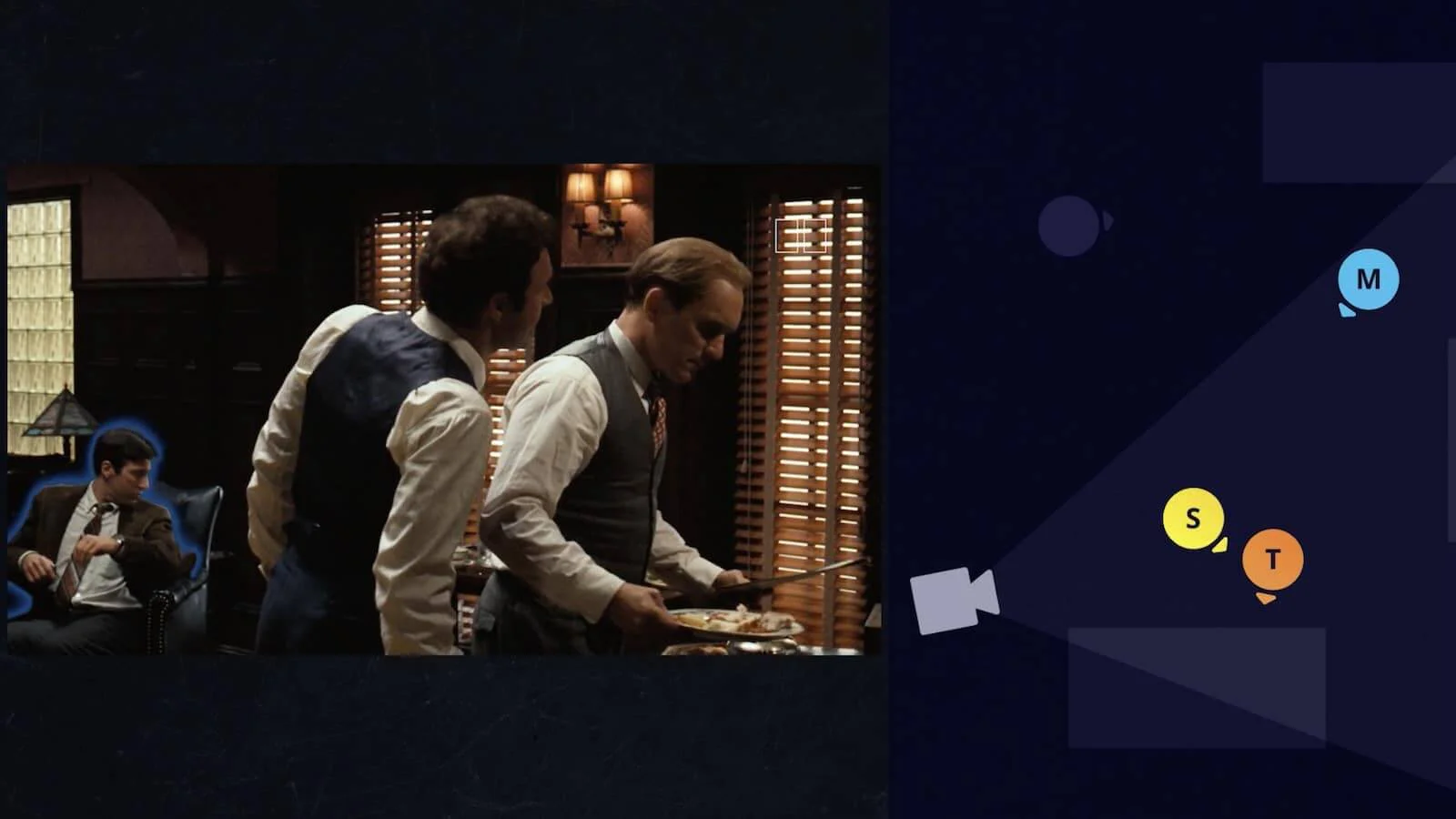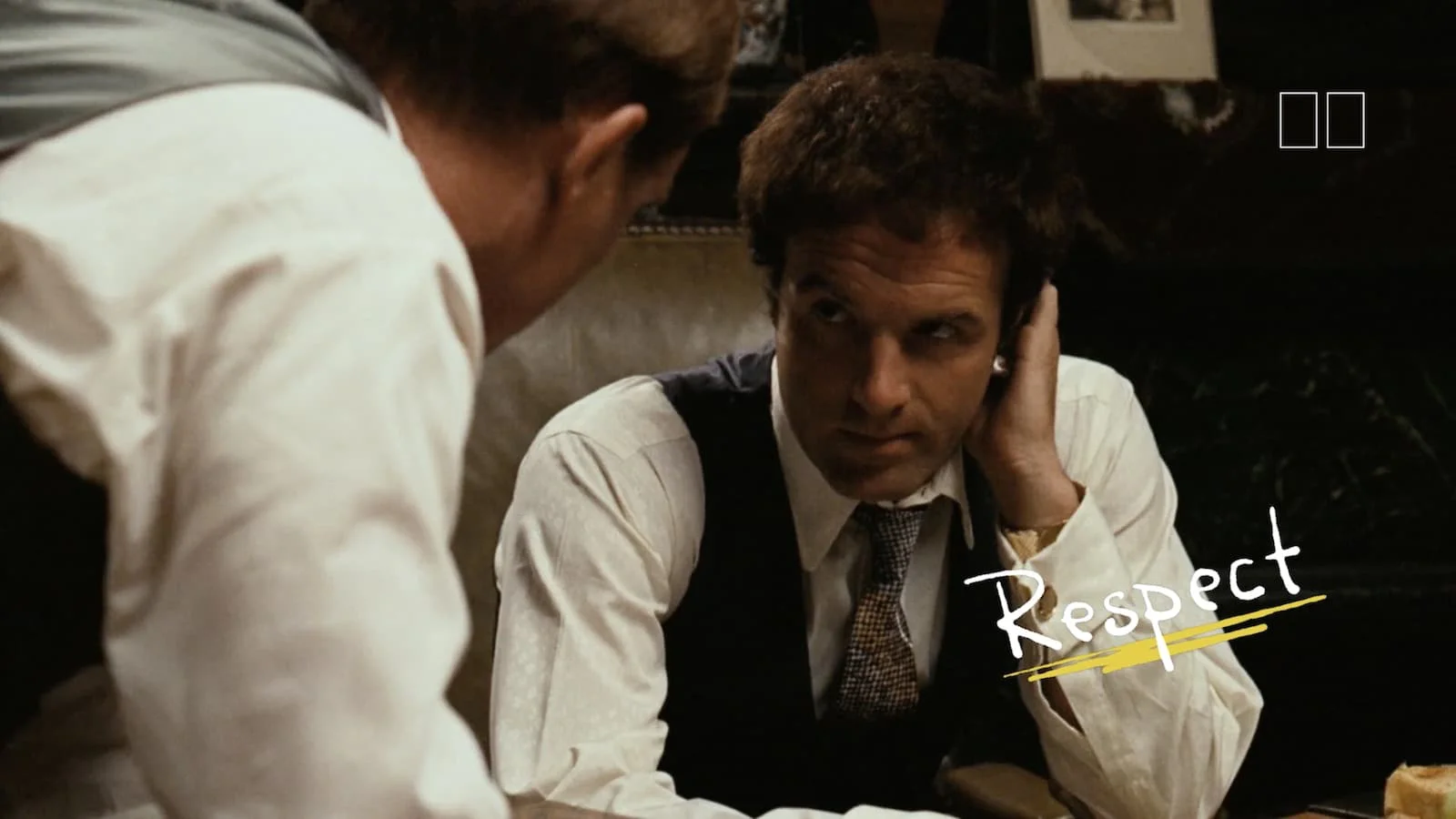The Godfather is rightfully one of the greatest films ever made. Everything works magnificently together. But one of the most overlooked aspects of the film is how well the blocking and staging are. Today for our film analysis of The Godfather, we’re examining a pivotal scene in the character development of Michael Corleone. In particular, we’re focusing on how the actors’ movements and camera direction help tell the story. Be wary of oranges, and let’s dive in!
The Godfather Analysis
Communicate with blocking
Before we jump into The Godfather critical analysis, let’s go through a refresher on the cinematic definition of blocking.BLOCKING DEFINITION
What is blocking in film?
Basically, blocking a scene refers to figuring out how the actors will move inside and outside the camera frame. It also relates to how actors will interact with their environment, such as if they need to pick up a prop at a certain moment.
When blocking a scene, a director should keep in mind the space between actors and objects, the shapes created to guide the audience’s eyes, and the lines drawn between characters.
Expert blocking can give audience vital information even without the use of dialogue. Just look at this scene from Back to the Future and notice how simple blocking tells exactly what we need to know.
You’re George McFly! • Back to the Future
Once the shop proprietor moves out of the shot, we see Marty and George in the exact same position with their hands on their heads. Before Biff even comes into the frame, we know this is Marty’s father.
Body language is something we take for granted but a small gesture here or a facial expression there carry with them massive amounts of information, context and unspoken messages.
When pursuing The Godfather analysis, we’ll look at this scene where Michael assumes a more active role within the family business. Body language again plays a part as bodies both in motion (Sonny) and at rest (Michael) fill in the gaps left by dialogue alone.
It’s Strictly Business • The Godfather
When Michael first enters the room, Sonny gets a good look at him. Sonny places his hands on Michael’s shoulders. Shortly thereafter, Michael steps out of frame. This shows us that Sonny is in control while Michael has no real agency. At least, right now he doesn’t.
Later in the scene, Sonny and Tom move across the room. We catch a quick glimpse of Michael, but again, no one really pays him any attention. He’s a passive observer into the conversation. There’s even a moment where Sonny steps directly in front of Michael, figuratively and literally overshadowing him.

Michael is excluded from the conversation
Remembering The Godfather movie analysis, the blocking here helps tell the story. Even if you watched this scene without the dialogue, you could tell Sonny’s in control initially while Michael seems like an afterthought. The blocking works, and it makes what’s to come even more impactful.
Later on, Michael finally has something to say. And the way the other characters are blocked around him let us know that Michael is telling us something important. Tom is in the background. Other characters are cut off at the head, so we can’t even see their faces. Our eyes are directed toward Michael throughout his monologue.
Of course, it also helps that the camera pushes in our Michael throughout his monologue, which leads us nicely into our second point...
The Godfather Movie Analysis
Capture the action with staging
Good blocking will only get you so far. The Godfather cinematography analysis would not be complete without looking at the staging within the scene in question.STAGING DEFINITION
What is staging in film?
Staging refers to the movement and placement of items in the frame in addition to camera movement. A cinematographer will work with the director to plan out the camera movement, placement, and area of focus. All of this in order to create a more visually dynamic scene.
Staging can amplify a scene and work in tandem with the blocking to create more striking images. Look at this scene from 1917. Watch how the blocking is accented and emphasized by the movement of the camera.
Dogfight • 1917
As the plane approaches, the camera pulls back. You’ll notice it moves slowly at first, simulating the audience’s experience of needing a second to recognize the danger. Then it pulls back quickly with our heroes, showcasing urgency.
A moving camera can be extreme, like in 1917, or it can be a more subtle maneuver like in The Godfather. And, of course, let's not forget that keeping the camera still is also an active decision to make.
It all comes down to how each moment should be captured and presented to the audience.
Continuing The Godfather analysis with the above scene, there are two main staging moves to pay attention to. The first is when Sonny and Tom move across the room. At first, Sonny towers over Tom, who’s sitting down. But then, they walk across the room where Sonny sits down.

Sonny concedes to Tom
Tom takes on a more domineering pose, showing us that the tide in this conversation has changed. Sonny is losing his stranglehold.
The second bit of important staging comes during Michael’s monologue. He describes how he wants this meeting to take place, punctuated with the statement that Michael would have no problem killing others if it comes down to it.
As the camera pushes in, other characters go out of the frame. With nothing else to focus on, we have no choice but to listen intently to Michael. He’s come into his own, now seeming to want to take his place in the family business.
The same information can come across in dialogue and performances, but with the right blocking and staging, you can turn a good film into a great one. There’s a reason there’s so much analysis of The Godfather out there. You can learn from the greats to make scenes that impact the viewer in more ways than one.
Up Next
More blocking & staging
One way to become a better filmmaker is to learn from the greats like Francis Ford Coppola. However, there is much to learn from the likes of Steven Spielberg, Stanley Kubrick, and Alejandro Iñarritu. Every director approaches blocking and staging differently and, as you'll see in this example, the effects of these decisions can turn simple scenes into dynamic and visually gripping moments.
Up Next: Blocking & staging examples →
Showcase your vision with elegant shot lists and storyboards.
Create robust and customizable shot lists. Upload images to make storyboards and slideshows.